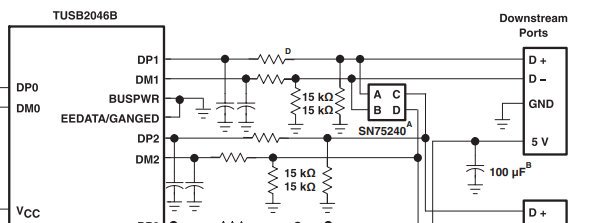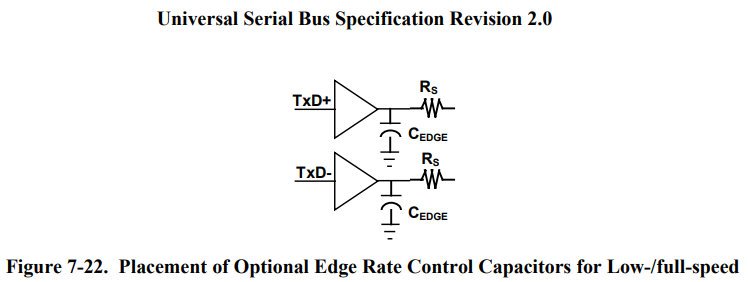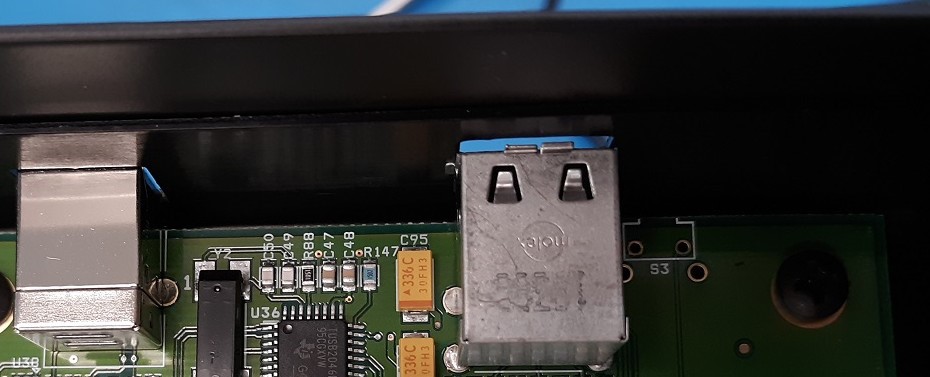A product using TUSB2046B is failing a radiated emissions test where two thumb drives are connected to USB via USB extension cables. The peak that's exceeding the limit is at 12 MHz * 7 = 84 MHz.
The datasheet shows a matching network with 22 pF shunt caps and 27 ohm series resistors.
Here is a note about D:
The USB spec agrees with this:
My questions:
- Why does the spec have the shunt cap, C[EDGE], on the source side of the series resistor rather than on the line side?
- Are there any recommended ways to change the matching network to reduce EMI? Is there a register setting that affects drive strength?





